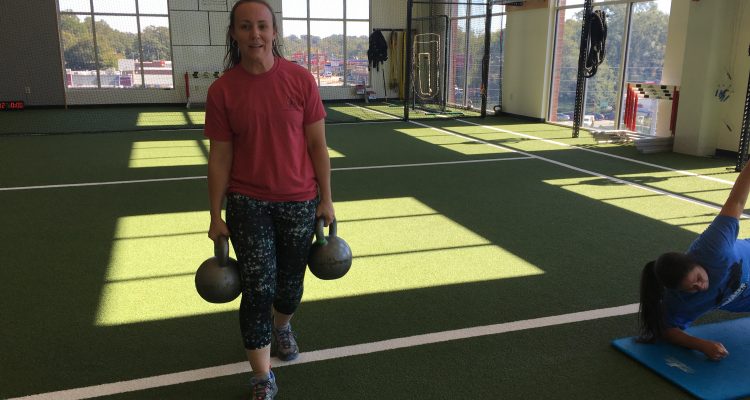Strength is the ability to generate force in order to overcome or resist being moved by external forces. As our society becomes more sedentary, the need for strength may seem unnecessary. However, just because you rarely have to lift heavy objects does not mean that strength training has no benefit to you. Increasing muscle mass and strength can protect you from injury, improve performance, and allow you to move confidently through your daily environment.
Injury Prevention:
Strength training is unparalleled for musculoskeletal injury prevention.The muscles exist in part to absorb the shock and energy that occurs during movement. For example, take running. Every step you take sends impact forces through your shin right to your knee joint. This unprotected force damages the tissues over time. Overuse injuries such as shin splints, stress fractures, patellar pain, arthritis, and more are due in part to a lack of protective muscle. Instead of the force of each step shooting straight into your knee joint, the musculature of the legs dissipates and deflects those forces from damaging on the joint itself.
This same principle applies to the spine, shoulders, and ankles. Strong, developed muscles keep the joints protected and aligned correctly. If you experience lower back pain, shoulder impingement, or weak ankles, strengthening the muscles around these joints may be the cure.
For older adults, accidental falls can be a real and deadly concern. Most accidental falls do not occur because of old age; they occur because the individual has lost the muscle mass and neural control to move quickly and accurately. Type II muscle fibers are responsible for power production and explosiveness. With old age, especially inactive old age, those type II muscle fibers atrophy disproportionately and rapidly. The lack of explosiveness makes older adults less likely to move quickly enough to react to changing situations. The only way to prevent falls is to preserve or rebuild muscular strength.
Improved Performance:
Possessing adequate strength can lessen the fatigue, soreness, and difficulty of many situations. Think of a time where you spent a day working in the yard. Maybe you had to move and place heavy stones, shovel dirt, or push a wheelbarrow up hill. While you may have completed the task, the feeling of soreness, exhaustion, and pain for days after indicate that you were not ready for the work. If you actively strengthen your muscles, challenging situations such as yard work, hiking, moving furniture, or playing sports will be less taxing and take less or no time to recover from.
But remember, Strength is only one of the 4 pillars of fitness. Think of your average power lifter or body builder: Would they be able to safely and comfortably run more than 2-3 miles? Can they lift their arms over their heads with full range of motion? As important as strength is, it should be kept in balance with the other pillars to make you as functional as possible.
Here are some tips for effectively improving your strength:
- Train the movement, not the muscle. Instead of a “back and biceps” day, focus on training movement. The fundamental movements to strengthen are the Squat, Hinge, Push (horizontal and vertical), Pull (horizontal and vertical), and Carry. If you train the movement, the appropriate muscles will develop and grow accordingly.
- Incorporate Double Progression. Building strength takes time, and it can be easy to hit a plateau. Instead of focusing solely on how much weight you lift for an exercise, give yourself a repetition range goal. If you can squat 100 lbs 5 times, don’t move up in weight until you can squat 100 lbs 7 times. This gives you multiple goals to strive for, and multiple ways to identify progress. Read more about double progression Here
- Recover. Your muscles are broken down in the gym. They are rebuilt outside the gym. Giving your muscles time to recover from workout sessions can be the key to sustainably gaining strength. Begin by strength training 2-3 times per week, and give yourself 24-48 hours between lifting sessions to allow your muscles to rebuild. Make sure your nutrition is adequate to fuel muscle growth, and aim for 8 hours of sleep per night.
- Quality, not Quantity. Performing 5 reps at 100 lbs with full range of motion, full body tension, and control during the eccentric phase will achieve much better results than 10 spastic, fast, and bouncy reps at 150 lbs. Hold yourself to a high standard of form. If your form broke down, you rushed through the rep, or you did not feel confident, don’t count the rep! This will keep you from overreaching, plateauing, and risking injury.

